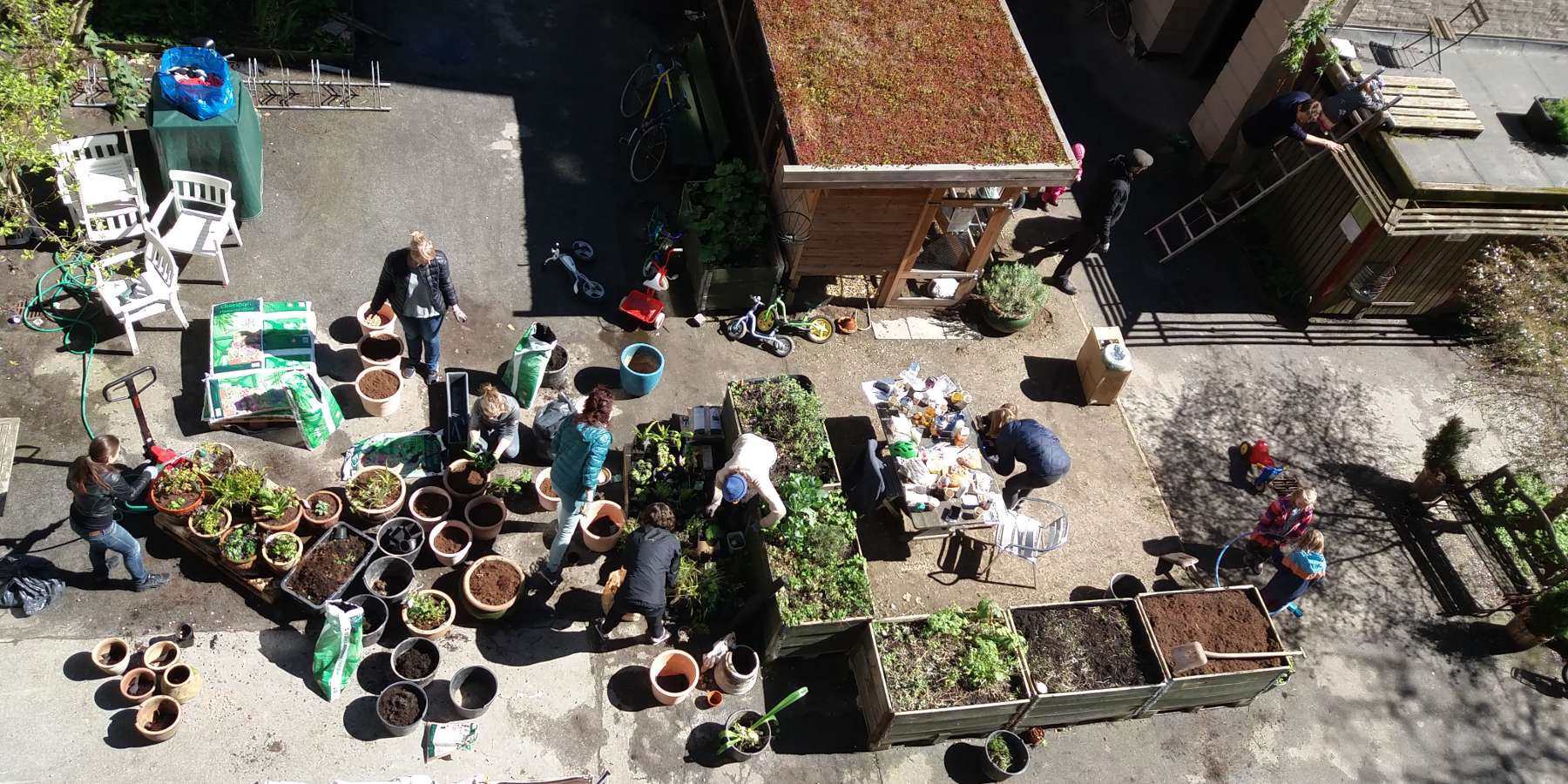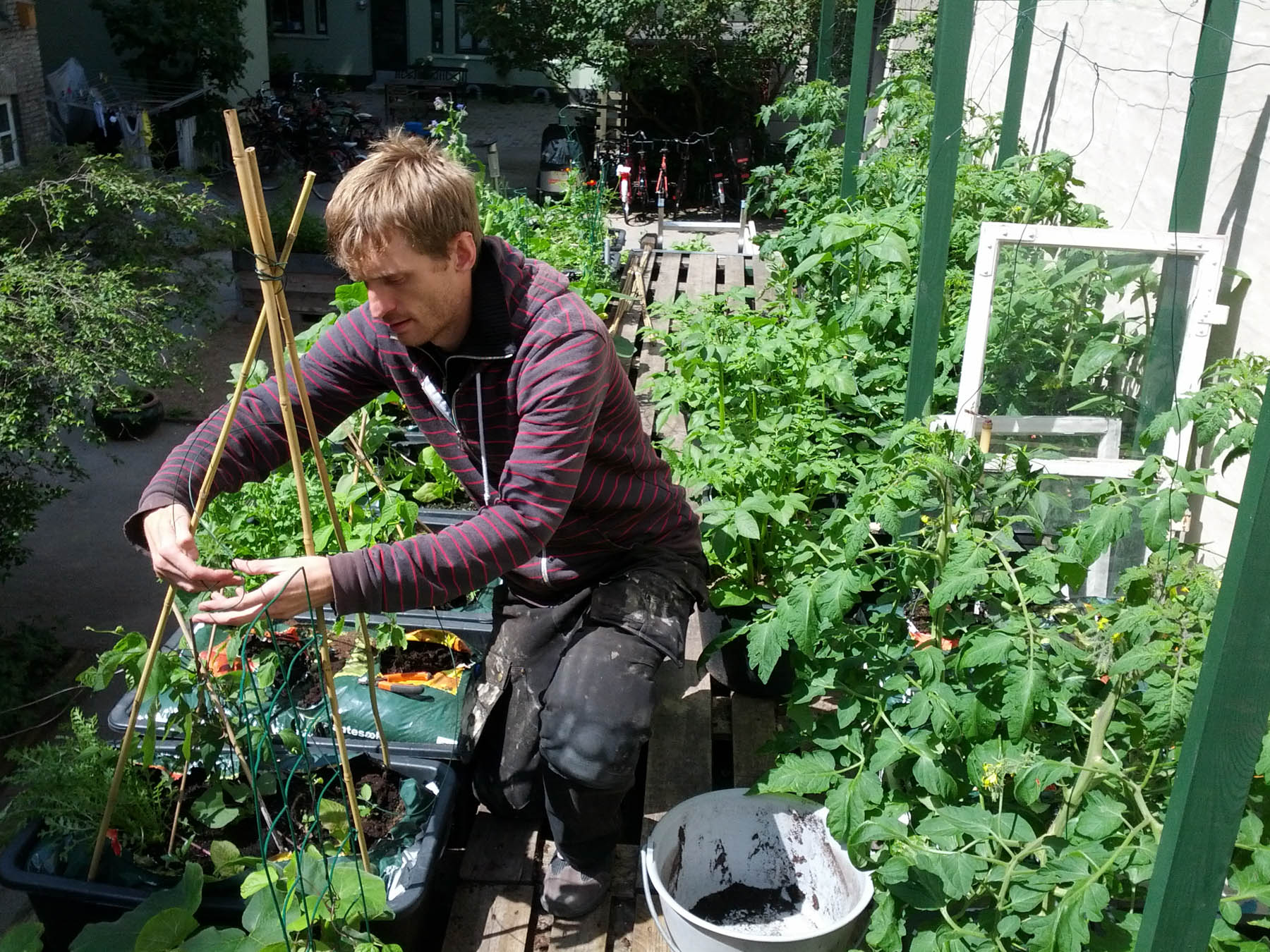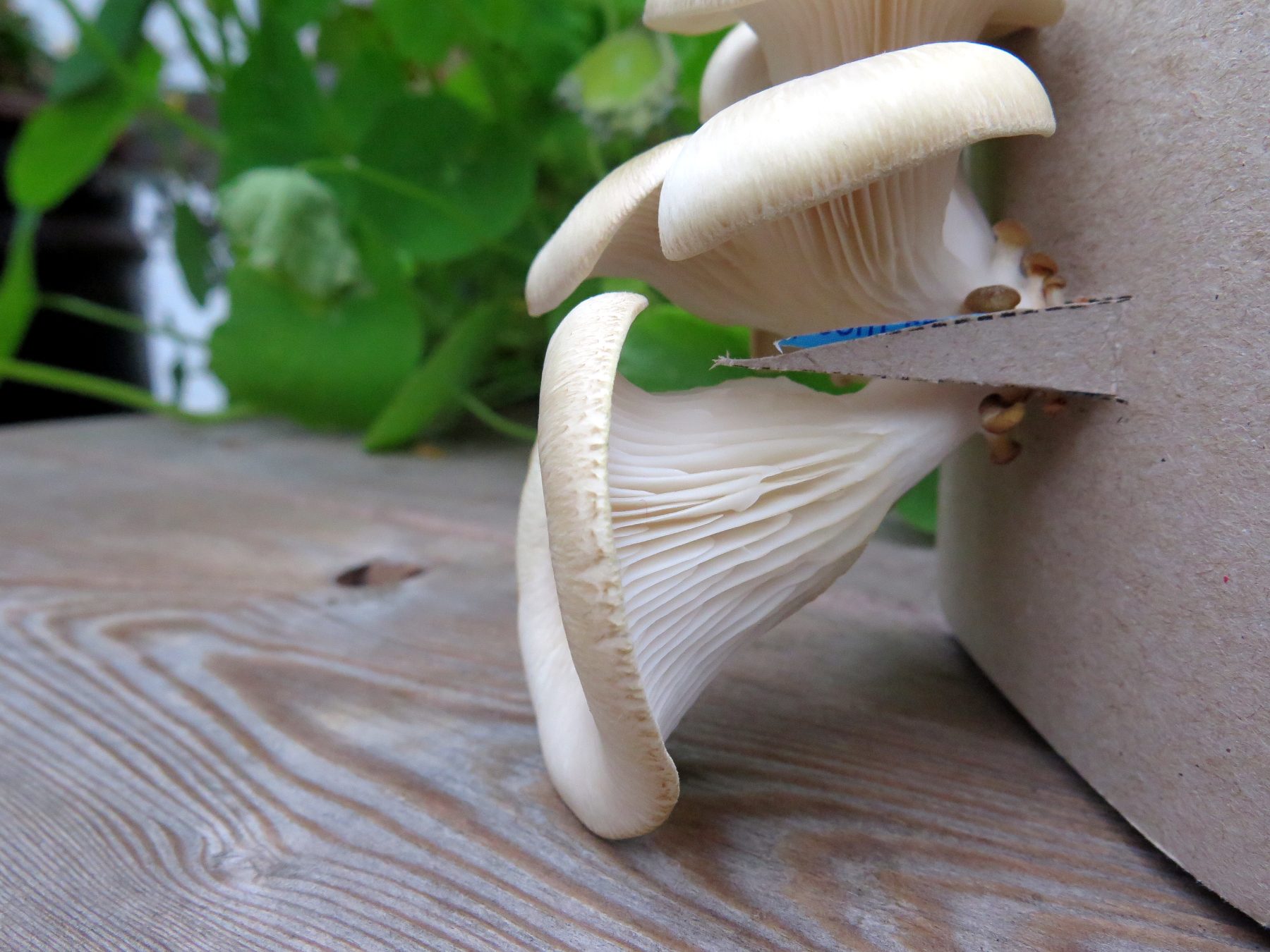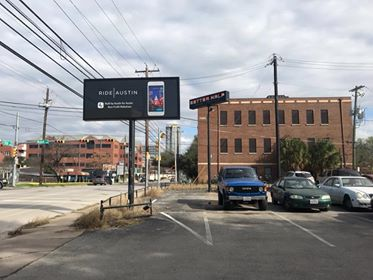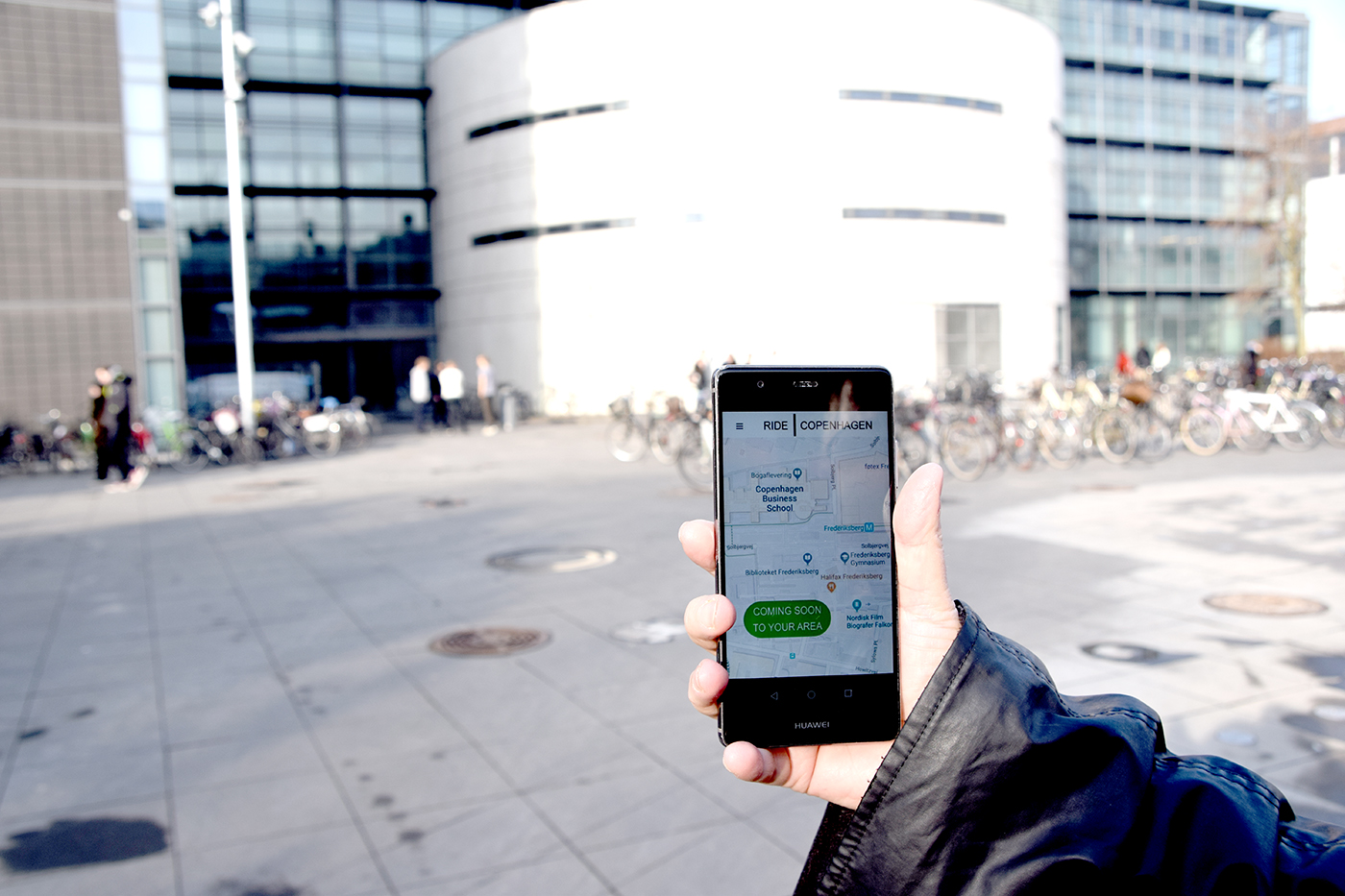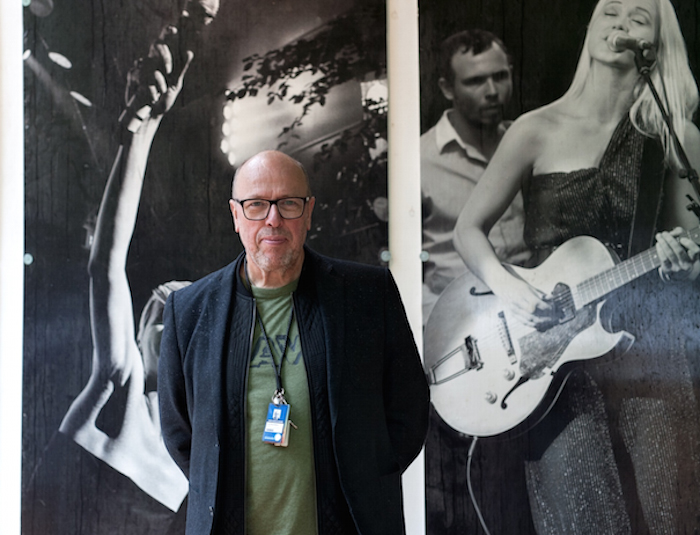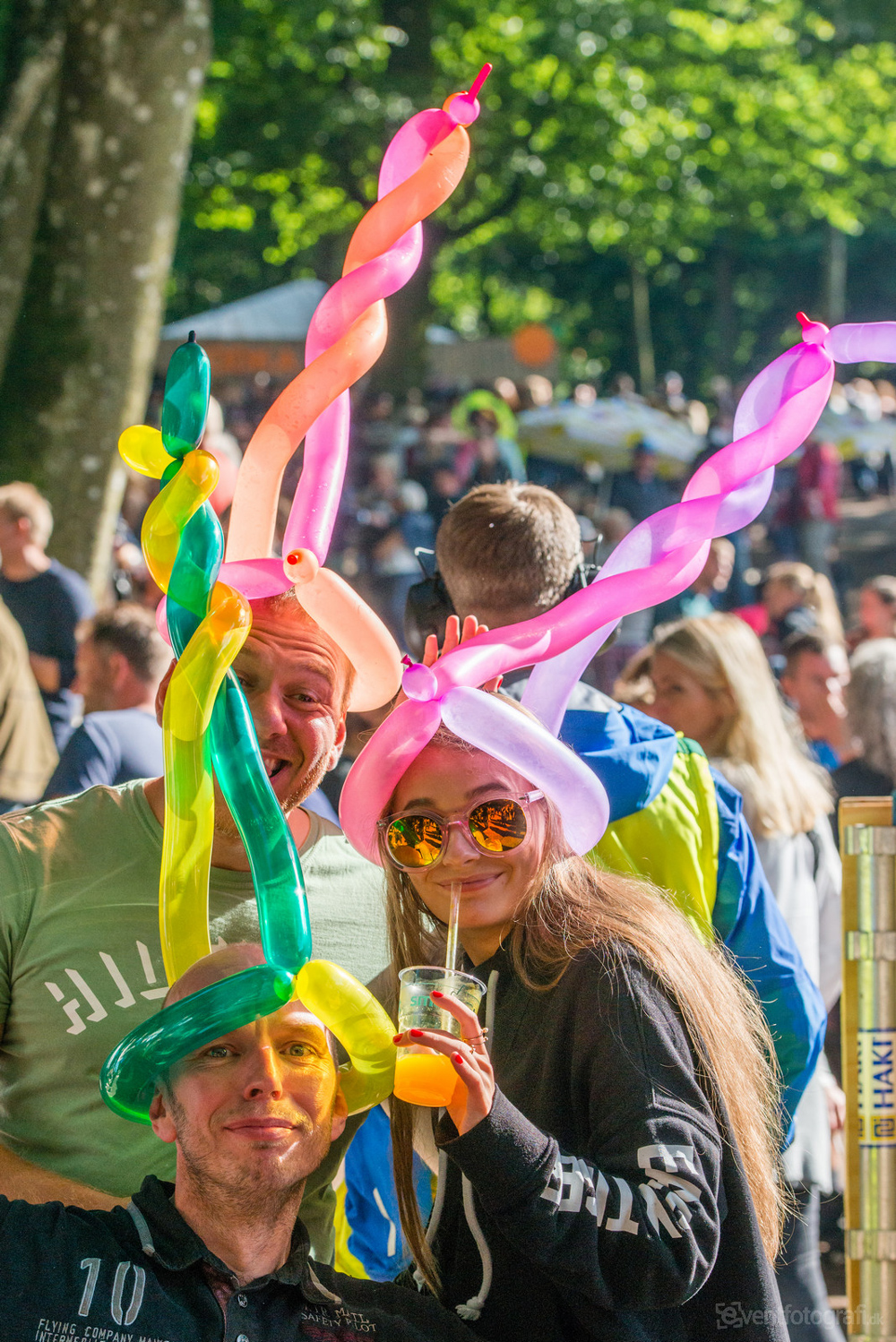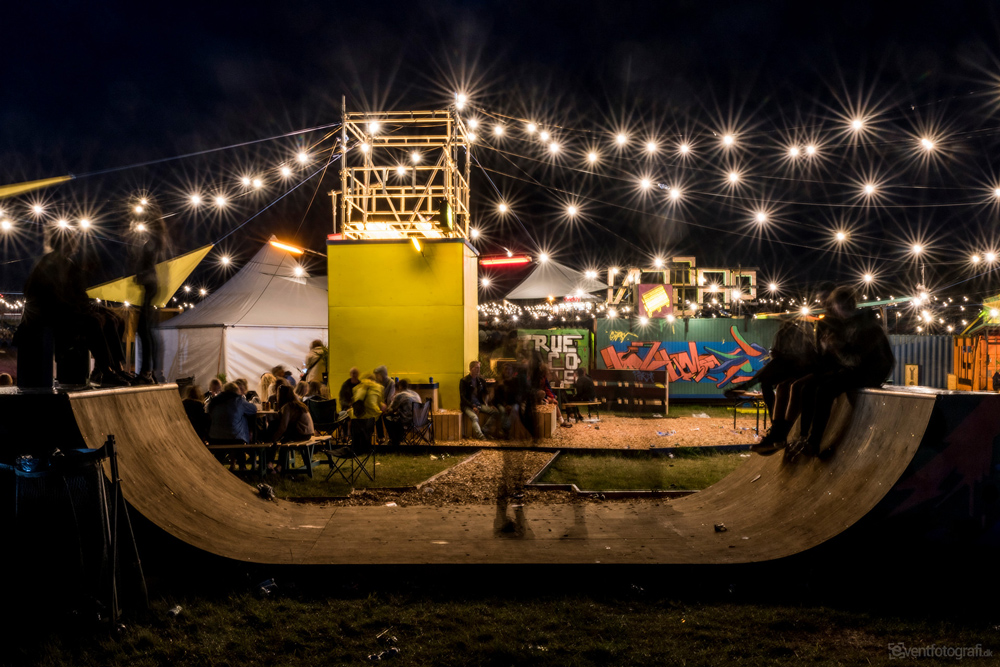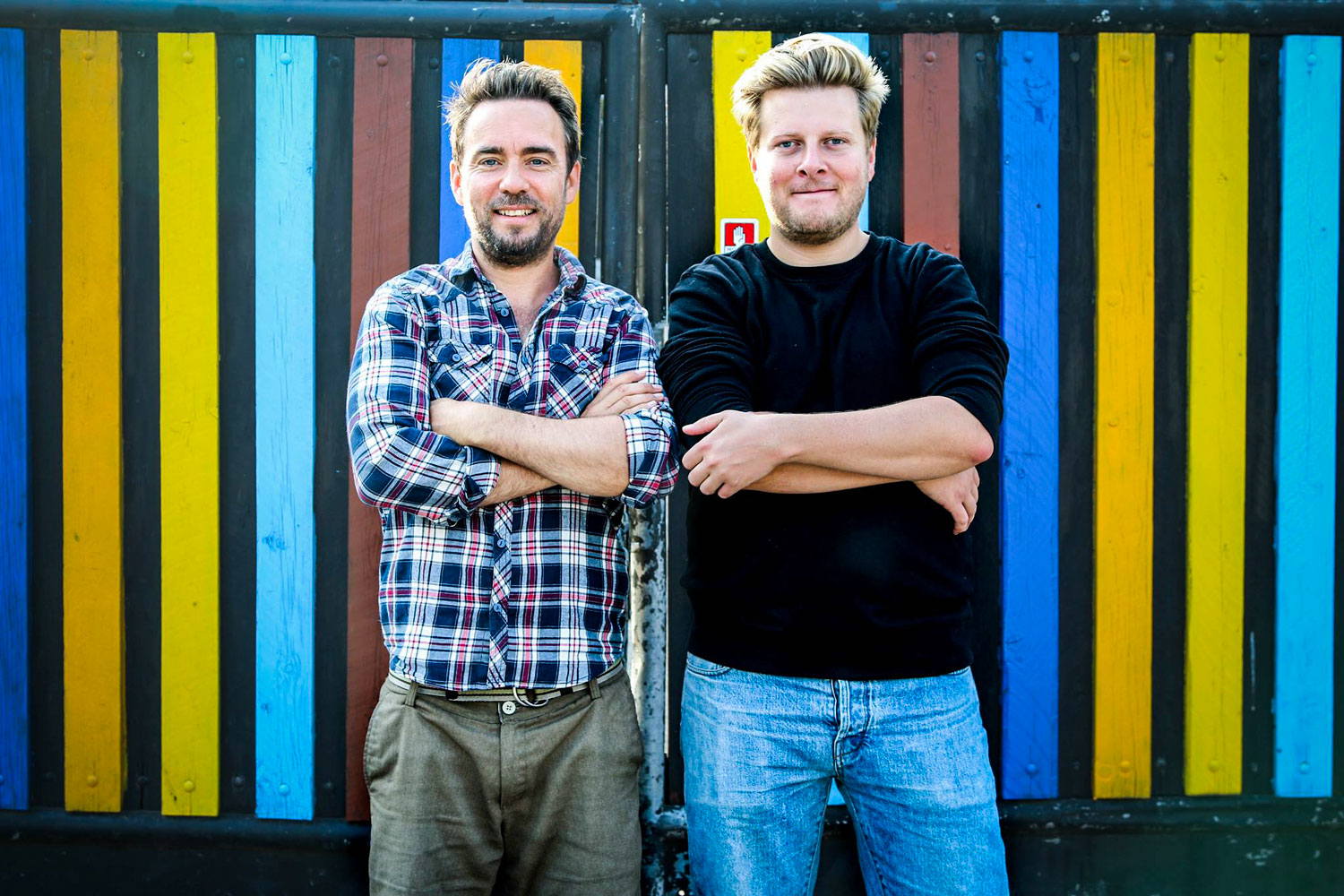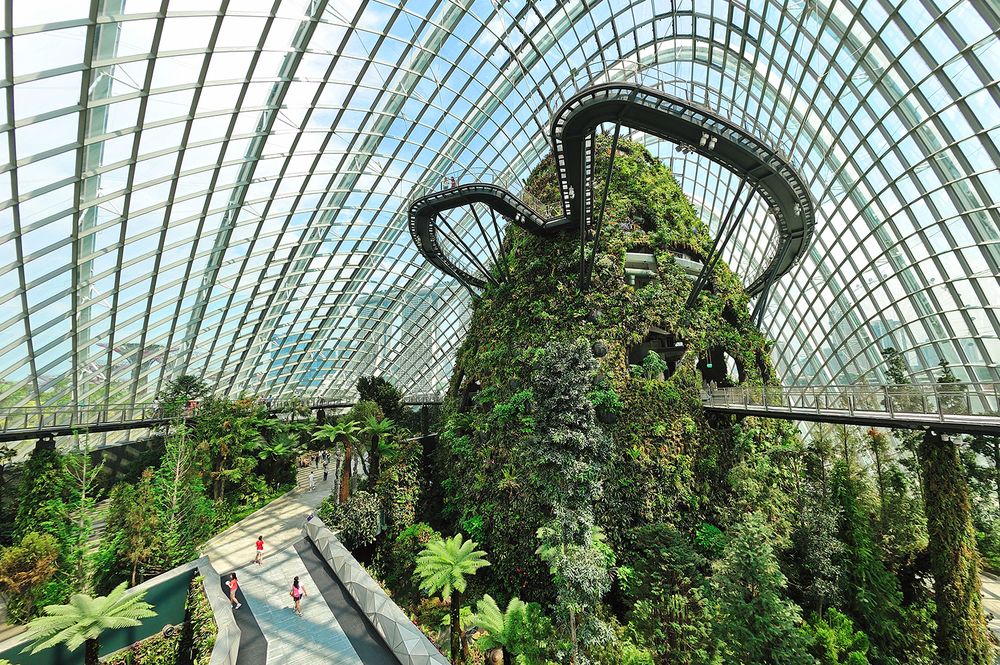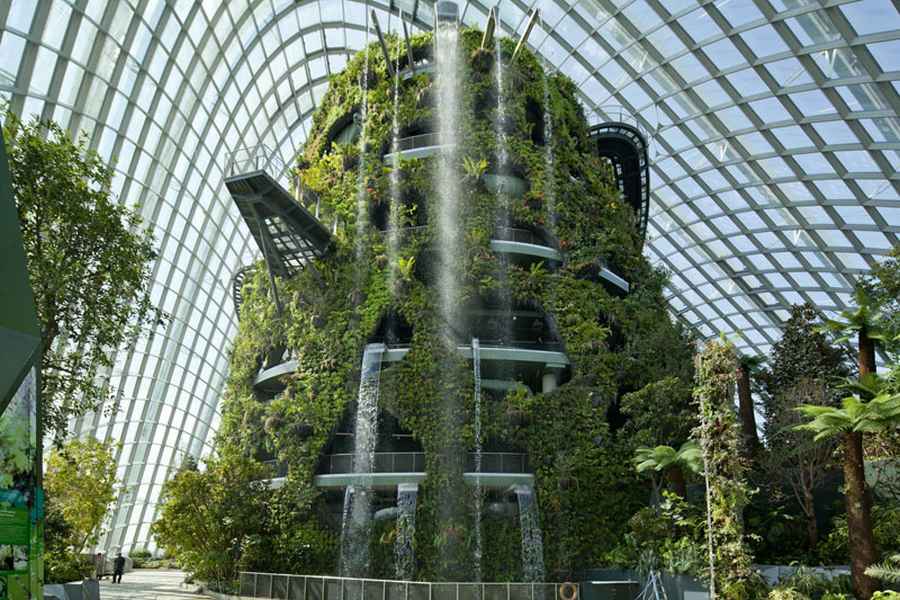Hos Greencubator er det målet at få bæredygtighed og iværksætteri til at smelte sammen. Pioner har talt med folkene bag det grønne kontorfællesskab.
AF MIKKEL DYRING DOHN
Det kan være svært at se det, hvis man ikke lige ved det. Men over shawarma-osen fra King of Kebabs åbne vindue på Nørrebrogade er facaden malet mørkegrøn. Det har den været siden 2015, hvor Greencubator for første gang slog dørene op for at byde velkommen til et bæredygtigt iværksætterhus.
På mange måde ligger det i selve navnet, hvad Greencubator gerne vil. Sammentrækningen mellem ’grøn’ og ’inkubator’ markerer foreningens formål om at støtte, vejlede og udvikle grønne virksomheder. Alligevel er navnet ikke længere helt præcist. I hvert fald ikke hvis man spørger Stine Kondrup, der sammen med Mads Lønneberg driver Greencubator til daglig:
”Vores navn er måske lidt misvisende i dag, fordi ’green’ helt naturligt refererer til miljø og det grønne, mens Greencubator har udviklet sig til også at handle om bæredygtighed i bredere forstand. Både i forhold til socialt entreprenørskab og i forhold til økonomi. Vi kan ikke komme uden om, at den økonomiske bundlinje er lige så vigtig som alt det andet, hvis man vil drive en virksomhed. Hvis man vil gøre en forskel, bliver man nødt til at tænke alle tre parametre sammen, og det forsøger vi at gøre her.”
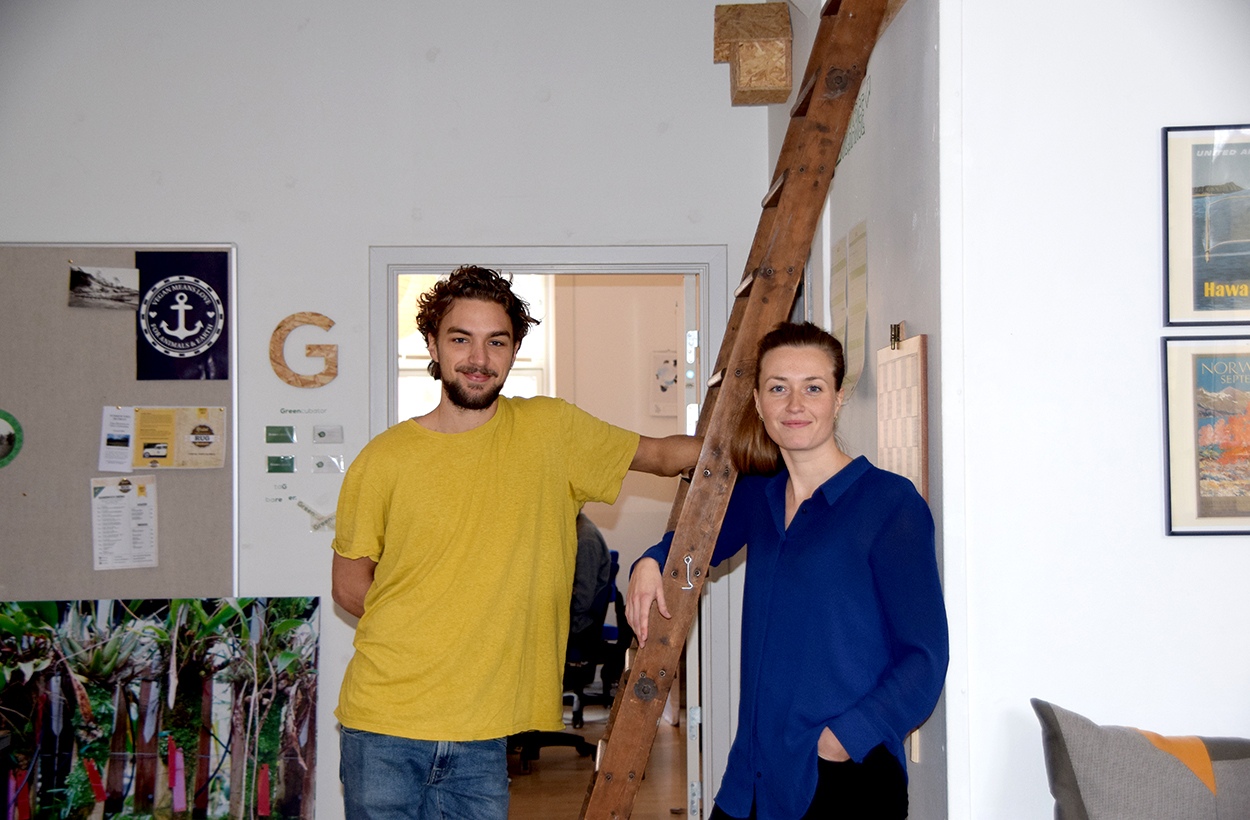
Partnerskab: Mads Lønneberg (tv.) og Stine Kondrup (th.) har sammen ført Greencubator mange trin op ad udviklingstrappen.
Drømmen om at revolutionere dansk iværksætteri
Idéen om at oprette et fælleskab for bæredygtige virksomheder opstod, ifølge Mads Lønneberg, ud fra en frustration. Rundt omkring var der massere af tilbud til iværksættere, der ønskede at starte en selvstændig virksomhed op, men ikke rigtig nogen, hvor bæredygtigheden var tænkt ind fra start af. Samtidig havde havde han erfaret, hvor konkurrencepræget iværksættermiljøet var, uden at det nødvendigvis gavnede den enkelte:
”Jeg har oplevet på egen krop, at der er meget spidse albuer i iværksættermiljøet. Det er mig først, min idé, alle er konkurrenter. Det gør mange små virksomheder meget sårbare, for alle konkurrerer om de samme fondsmidler og måske også de samme kunder,” siger han.
I stedet for at få blå mærker af at kæmpe sig frem på bekostning af andre, ville han med Greencubator skabe et sparringsrum, hvor man var kollegaer frem for modstandere, og hvor man ville kunne få gavn af hinandens kvaliteter. Og det mener Stine Kondrup, stadig er det vigtigste i dag:
”Det vi prøver med Greencubator er virkelig at italesætte fælleskabet. At vi sammen kan udvikle og udveksle idéer og kompetencer, lave samarbejder på tværs og prøve at tænke hinanden ind som kollegaer og partnere i stedet for som konkurrenter.”
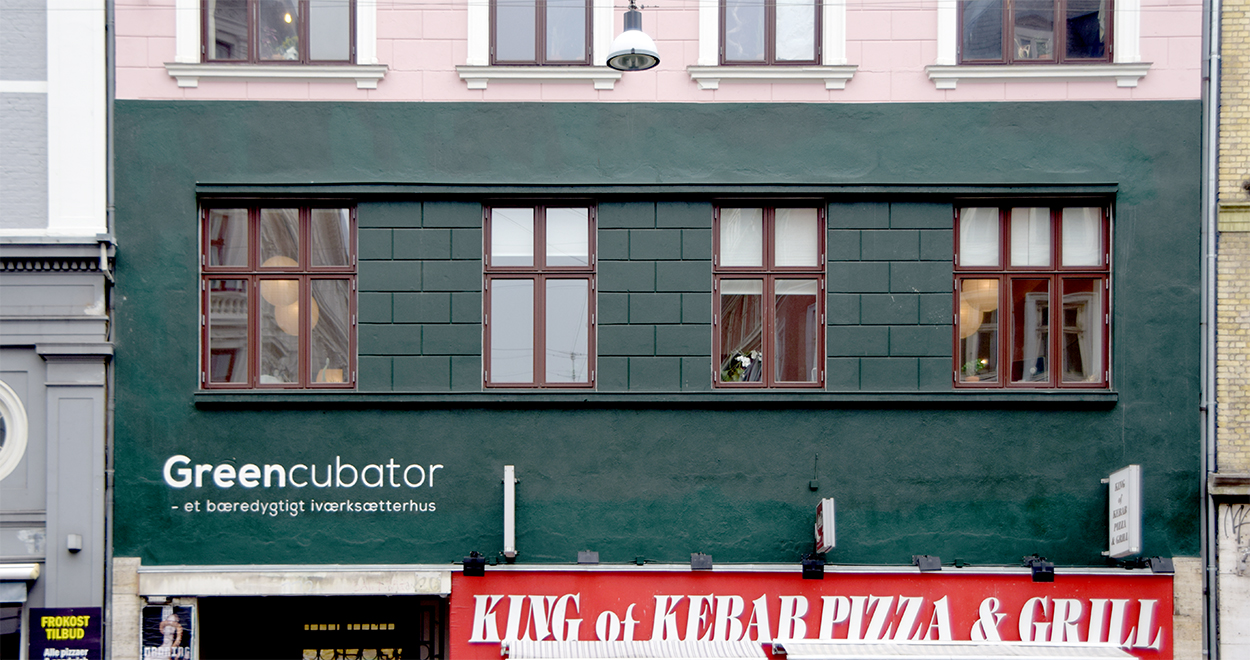
Grøn: Greencubators facade skiller sig ud blandt Nørrebrogades mange pizza og shawarma-barer.
Fællesskabets hjælpende hånd
Helt lavpraktisk er Greencubator et kontorfællesskab. I øjeblikket sidder der 20 virksomheder sammen, hvoraf nogle er mere selvstændige og har ikke et lige så stort behov for samarbejde eller investorer som andre. For Stine Kondrups egen virksomhed ’Intugreen’ – en mobilapp, der har til formål at motivere folk til at komme ud i naturen – har fælleskabet dog haft en kæmpe betydning.
”For mig har det betydet rigtig meget. Mig og min partner i firmaet Jonas har lavet mange samarbejder og fået nogle store kunder ved at kunne lave fondsansøgninger sammen med nogle af de andre i Greencubator. Det gør det meget nemmere, at man kan gå forbi folks kontorplads og sige: ’hey, skal vi ikke lige drikke en kop kaffe sammen og kigge på den ansøgning’, i stedet for at skrive mails hele tiden. Det gør det både sjovere og nemmere i sådan en proces.”
En anden, der har haft stor glæde af fælleskabsfølelsen er Pia Rathsach, der med sin virksomhed GoGreen Danmark har haft fast kontorplads hos Greencubator siden projektets start. Hun understreger, at det har gjort en kæmpe forskel for hende at sidde med nogle artsfæller, der som hende selv brænder for at fremme bæredygtigheden i Danmark.
”Der ligger utrolig meget synergi, at man sidder sammen med nogle, der vil det samme som en selv i forhold til at fremme hele den grønne tankegang. Samtidig er det her det første sted, jeg har siddet som selvstændig, hvor jeg har følt, at jeg har kollegaer. Vi følger tæt med i hinandens idéer og udfordringer, og det betyder rigtig meget for sammenholdet.”
Eksterne samarbejdspartnere har givet pote
Ud over den interne hjælp de forskellige virksomheder tilbyder hinanden, har Greencubator også etableret et ’Advisory Board’ og samarbejder med forskellige væksthuse for at sikre, at de grønne ildsjæle og projektmagere bliver ledt i en økonomisk bæredygtig retning.
I starten blev ’Boardet’ brugt flittigt til at hjælpe med de mere overordnede ting iværksætterne havde brug, fordi de stort set alle sammen var på det samme niveau rent udviklingsmæssigt og endnu ikke havde fået hul igennem til det marked, hvor de ønskede at være. Men i takt med at virksomhederne begyndte at udvikle sig i forskellige retninger, ændrede behovet sig også. Derfor begyndte de i Greencubator at lave workshops og mindre forløb med personlig sparring. Og i løbet af 2017 trådte ’Advisory Boardet’, ifølge Stine Kondrup, lidt i baggrunden for at give plads til endnu mere effektiv hjælp:
”Der er ikke det samme behov for Advisory Boardet længere, fordi vi har fået et partnerskab med Væksthus Hovedstadsregionen og Connect Denmark, der gør hjælpen meget mere specifik fra virksomhed til virksomhed. Jeg screener vores virksomheder og sørger for, at de kommer i kontakt med de rigtige. For flere af virksomhederne har det betydet, at de er ekspanderet på rigtig kort tid.”
For Pia Rathsach betød screeningen at hendes virksomhed fik etableret et samarbejde med Connect Denmark, og det har været en stor hjælp, mener hun.
”Det har hjulpet mig i forhold til at skabe et fokus omkring, hvad det er GoGreen skal og ikke skal. Når man render rundt med en masse kreative idéer, kan det nogle gange være svært også at have fokus på at skulle drive en forretning. Og her har den professionelle sparing, jeg har fået gennem Connect Denmark været meget værdifuld. ”
Et af de step Pia Rathsach har taget, efter hun blev en del af Greencubators fælleskab, er at ændre virksomhedens profil fra at være centreret omkring København til at blive landsdækkende. Her har i særdeleshed den tekniske assistance, hun er blevet tilbudt i huset, haft afgørende betydning. Visionen for GoGreen Danmark er nu at forbrugere, uanset hvor de befinder sig i landet, let skal kunne finde frem til de steder omkring dem, hvor de kan handle grønt og gøre en bæredygtig forskel med deres pengepung. Til det formål er Pia Rathsach i gang med at lancere en app, som hun håber kan omfatte Danmarks ti største byer allerede i løbet af 2018.
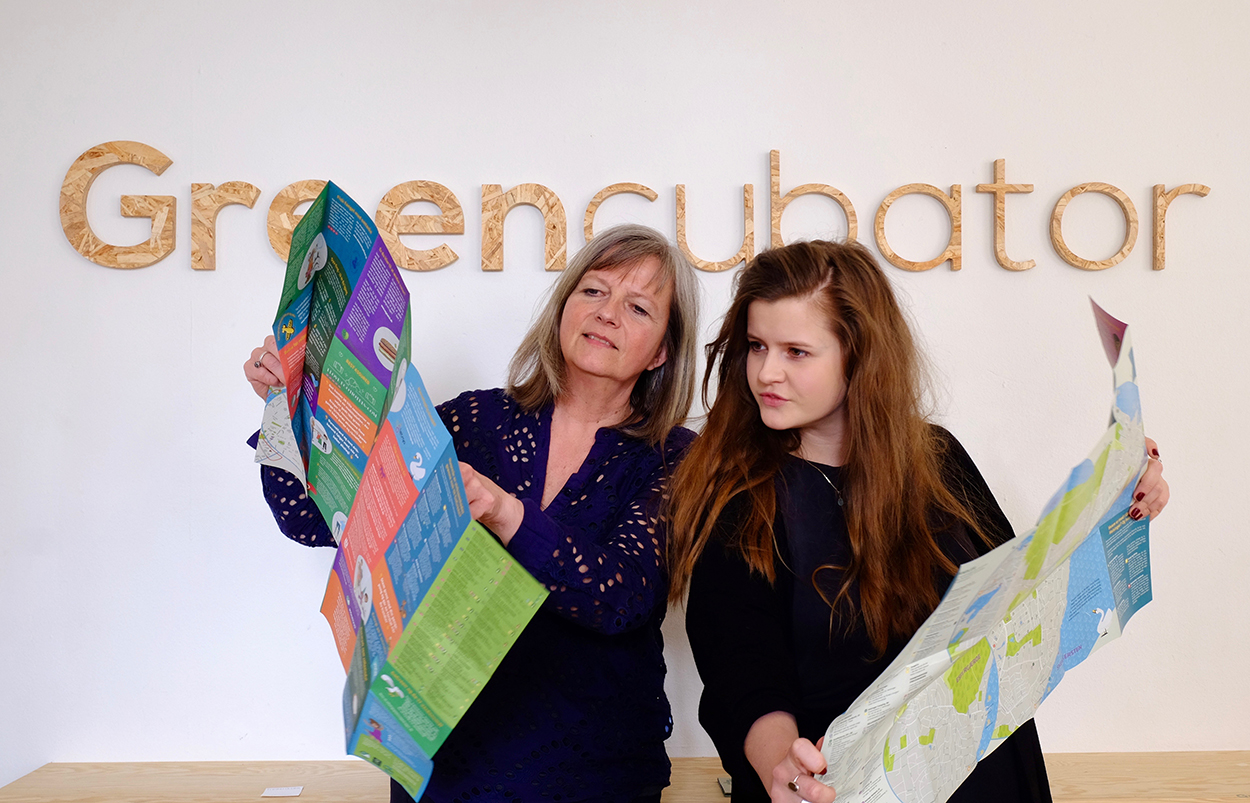
Vejviser: Pia Ratsach fra Go Green Danmark (tv) udpeger bæredygtige adresser på sit bykort.)
Netværket er blevet større
Det er dog ikke kun GoGreen Danmark, der har vokseværk i øjeblikket. Også generelt er der, ifølge Stine Kondrup, sket meget i Greencubator det seneste års tid, hvor huset har taget springet fra blot at være et kontorfælleskab til i højere grad at være et grønt vidensnetværk og en platform for politiske arrangementer:
”I dag bliver Greencubator brugt til at afholde en masse arrangementer udefra, hvor vi bare udlejer vores lokaler. Man kan mærke, at vi er blevet et navn derude, og folk begynder at komme til os med deres projekter. Vi er ikke et konsulenthus, men vi har så mange forskellige kompetencer og ressourcer i huset, og det bliver der lagt mærke til. Vores netværk er blevet ret stort.”
I løbet af 2018 skulle netværket gerne vokse sig endnu større. Her har Greencubator som målsætning at udvide horisonten og få et internationalt præg, og allerede nu er der et samarbejde i støbeskeen i forhold til at skrive Greencubator ind i et stort EU-projekt om bæredygtigt iværksætteri. Men selvom de grønne vinger begynder at række længere, vil det vigtigste for Stine Kondrup altid være, at de kan bære deres egen vægt:
”Det vigtigste er, at platformen er bæredygtig i sig selv. At fælleskabet kan bære det. Og at der fortsat vil være en følelse af fælles ejerskab. Vi er jo non-profit forening, så der er ingen af os, der ønsker at skulle tjene en masse penge på Greencubator. Vi ønsker bare at kunne hjælpe hinanden og styrke grønt iværksætteri.”



